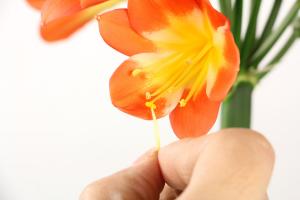How to Care for Rubber Tree Plants
Rubber tree plants are delightful additions to an indoor or outdoor space. They're known for their beautiful foliage and low maintenance requirements. These plants are also known for their ability to purify the air and remove harmful toxins. If you're interested in growing rubber tree plants, here's everything you need to know to care for them.
Light Requirements
Rubber tree plants need bright, indirect light to thrive. These plants can't tolerate direct sunlight because it can scorch their leaves. If you're growing your rubber plant indoors, find a spot near a window that gets bright, indirect light. If you're growing your plant outdoors, aim to place it in a spot where it gets partial shade.
Watering Needs
Proper watering is essential to the health of rubber tree plants. These plants need regular watering, but they don't like to be watered too frequently. It's vital to find the perfect balance, so your plant doesn't end up staying too dry or soaking wet.
A general rule of thumb when it comes to watering rubber tree plants is to water them once a week. However, you should adjust the frequency of watering based on the temperature, humidity level, and the type of soil you're using. Also, make sure to water the plant deeply and let the water drain out of the bottom of the pot to avoid root rot.
Temperature and Humidity
Rubber tree plants are easygoing about temperature and humidity. They can survive in a wide range of temperatures, but they prefer temperatures between 60°F and 85°F (15.5°C and 29.5°C). These plants also tolerate low humidity levels, but they thrive in moderate to high humidity levels.
You can increase the humidity around your rubber tree plant by placing a humidity tray filled with pebbles and water next to it. Misting the leaves regularly and grouping plants together can also help increase humidity levels.
Fertilizing Requirements
Fertilizing is another essential aspect of rubber tree plant care. These plants require regular feeding during the growing season from April to September. You can use a balanced fertilizer and follow the instructions on the package to fertilize your plant. Do not over-fertilize the plant as it can damage the roots.
Pest Control
Rubber tree plants are known to be pest-resistant, but they can still attract mealybugs, spider mites, and scale insects. If you notice any signs of infestation, use a mild insecticide spray, or remove bugs with a cotton swab soaked in rubbing alcohol.
Pruning
To keep your rubber tree plant looking healthy and bushy, you may need to prune it regularly. Prune back any dead, yellowing, or diseased leaves whenever you notice them. You can also trim back any leggy growth or stunted branches. Pruning encourages new growth and helps maintain the shape of the plant.
Conclusion
With proper care, rubber tree plants can flourish and bring beauty to your space. Remember to find the perfect balance when it comes to watering, fertilizing, and light requirements. Keep an eye out for pests, and prune regularly to keep your plant healthy and bushy. Good luck!

 how many times do yo...
how many times do yo... how many planted tre...
how many planted tre... how many pine trees ...
how many pine trees ... how many pecan trees...
how many pecan trees... how many plants comp...
how many plants comp... how many plants can ...
how many plants can ... how many plants and ...
how many plants and ... how many pepper plan...
how many pepper plan...





























